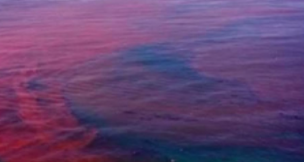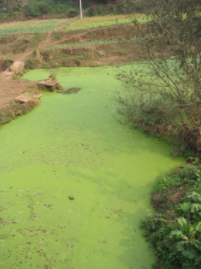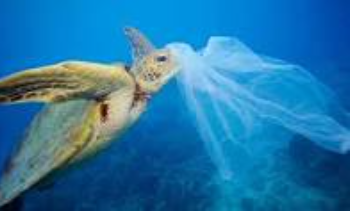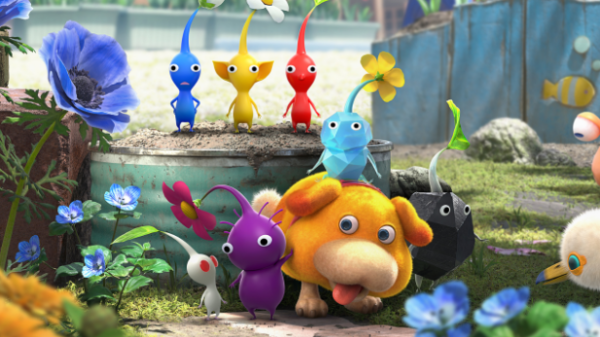Algal Blooms: Not Your Typical Plants
January 19, 2022
Alga, plural algae, are interesting organisms. They share characteristics with both plants and animals, so they can’t be classified as a singular one. Algae can be big or small: some are microscopic, while others can reach up to 200 feet in length! Algae is used in multiple different industries, from crude oil to pharmaceutical companies. However, lots of algae in a single place can be dangerous. And those algae havens are called algal blooms.
Dangerous Blooms
Algal blooms have a specific name: HABs; an HAB is a harmful algal bloom. However, it’s interesting because the algal blooms are not necessarily always caused by algae.
Algal blooms can sometimes be caused by cyanobacteria. Cyanobacteria is a plant-like organism that uses photosynthesis to create food. They live naturally in all types of water, and are mostly found in brackish (which is saltwater and freshwater combined) or marine water.
Algal blooms are caused when the algae or cyanobacteria begins to multiply in their body of water very quickly. This can cause the water to look like green pea soup, or maybe spilled paint. Most blooms will form in warm or slow moving bodies of water. They also form in waters  infused with nutrients from septic tanks or runoff. The blooms can come in different colors: red, brown, blue, or the most common, light green. The algal blooms can form at any time of the year, but it’s most common in the late summer to early fall.
infused with nutrients from septic tanks or runoff. The blooms can come in different colors: red, brown, blue, or the most common, light green. The algal blooms can form at any time of the year, but it’s most common in the late summer to early fall.
Algal blooms also are harmful to the ecosystems. The cyanobacteria ‘steals’ the sunlight that other organisms need to survive, and they also block the sunlight for organisms living underwater. You can’t tell if there are toxins in an algal bloom.
However, there are lots of toxins that are produced within algal blooms. One of the most poisonous toxins is cyanotoxins. Cyanotoxins are harmful to people, animals, plants, and the rest of the environment. They are some of the most powerful and poisonous toxins discovered in the entire world! The organisms affected by cyanotoxins get very, very sick. Unfortunately, nobody has discovered an antidote for the cyanotoxins yet.
The main thing to remember about algal blooms is that they are in fact quite dangerous.
In Contact With An Algal Bloom
You may or may not realize that there’s an algal bloom nearby because, sometimes, the blooms stay underwater. Some of the blooms may look like mats or scum, or sometimes even foamy, especially when they get washed towards the shore. When the bacteria or algae in the algal bloom die out, then the water may smell like rotting plants — putrid.
People, animals and other living things can come in contact with these algal blooms in a couple of ways. One way is by drinking or ingesting water infected with an algal bloom. Another way is swimming or doing other recreational activities in water that is infected with an algal bloom.
Luckily, there are a couple precautions that you can take to protect yourself against algal blooms. Firstly, don’t swim, kayak, canoe, or ingest any water that appears to be contaminated with an algal bloom. If you do swim in contaminated water, wash it off with freshwater as quickly as possible. Secondly, report any ‘musty’ smells or tastes of water that comes from your tap to a local water authority. Lastly, if there is a sign or notice that tells you an area is contaminated, don’t swim in or drink that water!
Fortunately for us, we can prevent algal blooms from happening, as long as we follow all the right procedures. For instance, only use eco-friendly or the recommended amount of garden fertilizers or other products, to prevent the amount of runoff that ends up in water. Another way to prevent algal blooms is to maintain your house’s septic tank properly (if it has one). One last idea is to grow natural vegetation around larger bodies of water, so that the plants can filter out toxins and remove them from the water.
Predicting HABs
Just like a hurricane, tornado, flood, or other natural disaster, HABs can be predicted, too. One of the companies who forecasts HABs is NOAA, or the National Oceanic and Atmospheric Administration. On their website, it states, “Like a weather forecast, a HAB forecast provides local and state officials with advance warning that allows them to test potentially affected shellfish beds more precisely and for shorter periods of time and, if necessary, post advisories in coastal areas where there is a direct health risk.” This (long) quote basically means that HAB forecasts help leaders test areas that may be considered as or alert people living nearby to a potentially dangerous HAB.

Even though we can’t completely prevent HABs from happening, we know that there are some things to look out for. Make sure the water isn’t contaminated, reduce levels of liquids that may provoke an HAB, and look out for signs of an HAB. A good quote to memorize about HABs is, “When in doubt, it’s best to keep out”. So when you’re unsure about whether there’s an HAB in your area or not, just don’t go in the water. In conclusion, even though HABs occur naturally and you can’t always prevent them, we can work on promoting awareness about them, and reduce the (negative) impacts they impose on communities.
Works Cited
Center for Disease Control and Prevention (CDC). “Cyanobacteria Blooms FAQ.” CDC.GOV, CDC, www.cdc.gov/habs/pdf/cyanobacteria_faq.pdf. Accessed 14 Dec. 2021.
Department of Environmental Protection (DEP). “NJDEP | HAB | Home.” NJ.GOV, www.nj.gov/dep/hab. Accessed 14 Dec. 2021.
National Oceanic and Atmospheric Administration. “What Is a Harmful Algal Bloom? | National Oceanic and Atmospheric Administration.” NOAA.GOV, NO, www.noaa.gov/what-is-harmful-algal-bloom. Accessed 14 Dec. 2021.
Newin, Ralph A. Algae | Definition, Characteristics, Classification, Examples, & Facts.” Encyclopedia Britannica, Britannica, www.britannica.com/science/algae. Accessed 14 Dec. 2021.















